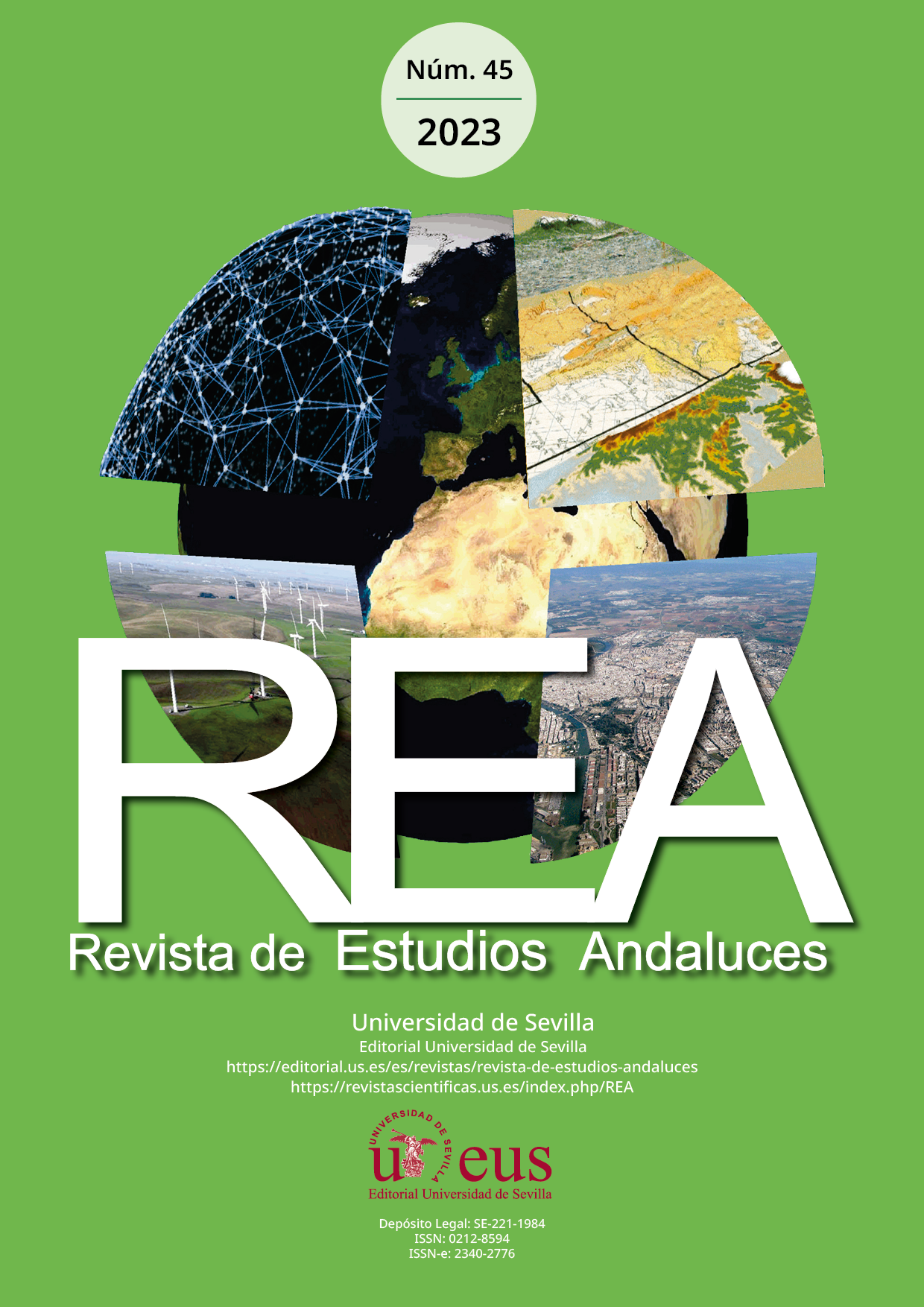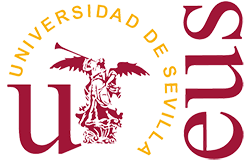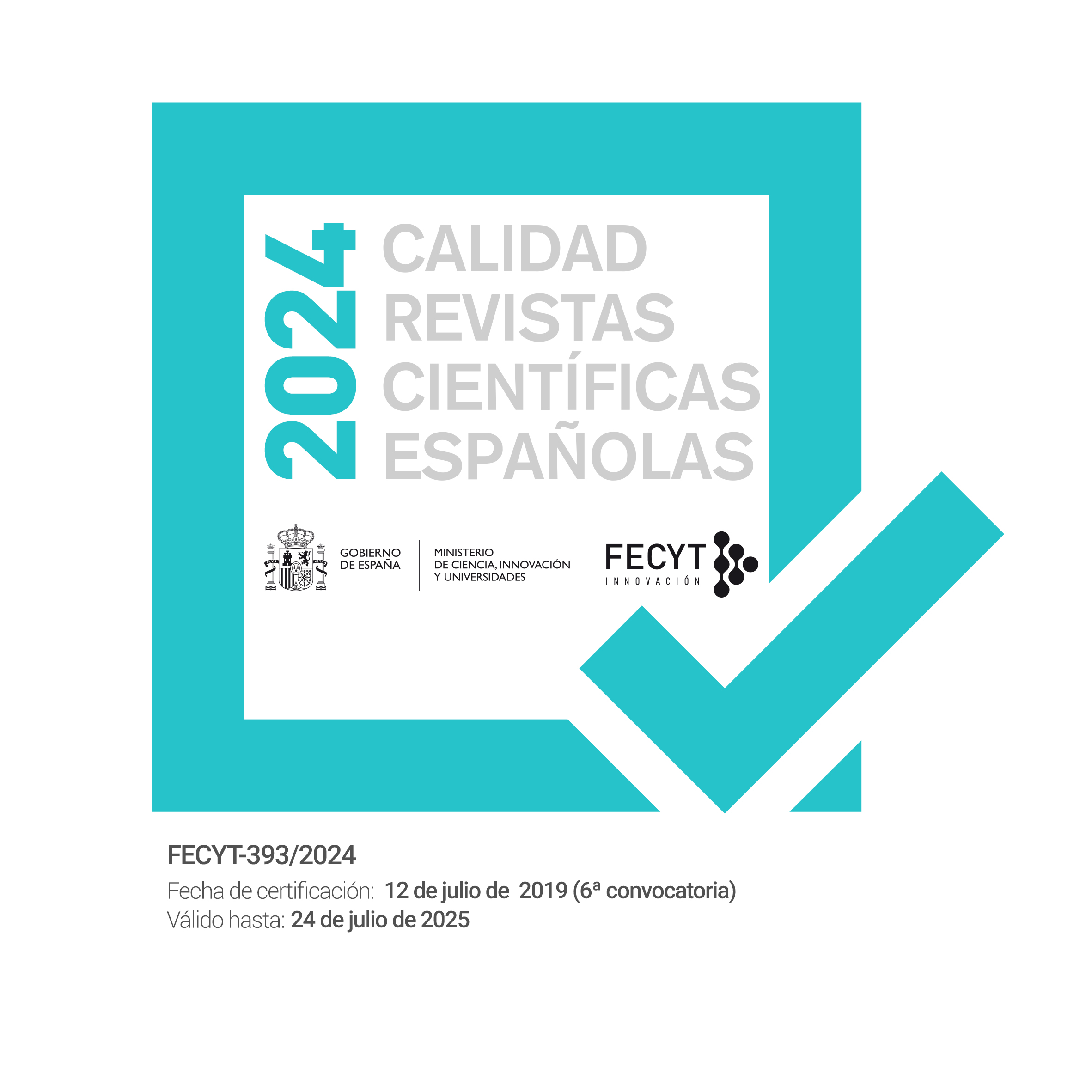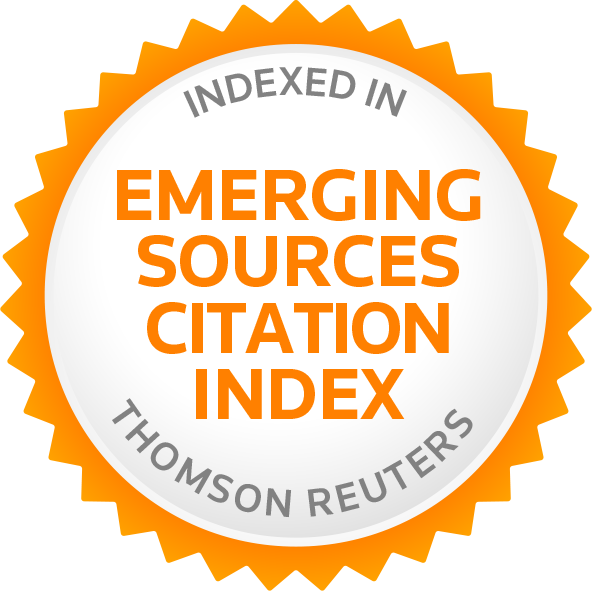Inteligencia emocional: Un estudio del TEIQue-SF aplicado a líderes potenciales en el ámbito universitario
DOI:
https://doi.org/10.12795/rea.2023.i45.01Palabras clave:
Inteligencia emocional, Liderazgo, Inteligencia emocional rasgo, TEIQueResumen
La inteligencia emocional está cobrando cada más más relevancia en multitud de ámbitos y también en el empresarial. Este protagonismo actual motiva que a que diferentes corrientes de trabajo sugieran la idea de que la inteligencia emocional es un factor importante para un liderazgo efectivo en las organizaciones.
Nuestro trabajo encaminó su estudio hacia el análisis de la inteligencia emocional del alumnado universitario por dos motivos: por un lado, la tarea de la dirección es una labor compleja, tanto por las funciones desarrolladas en sí mismas, como por las habilidades y requisitos que se necesitan. Por otro lado, el alumnado universitario, concretamente aquél relacionado con los estudios de dirección de empresas, puede verse potencialmente involucrado en futuros procesos de selección para la ocupación de puestos de responsabilidad.
El proceso llevado a cabo para conocer el grado de tal inteligencia, para predecir sus capacidades de liderazgo y sus posibilidades de adecuación a roles de relevancia, se ha instrumentado a través de una adaptación del cuestionario de Autoinforme de Petrides en su forma corta. Del mismo modo, se ha buscado identificar las principales dimensiones que configuran la inteligencia emocional, partiendo de una inicial propuesta de investigación de dicho autor.
Los resultados encontrados en cuanto a la autovaloración de alumnos universitarios muestran un error estándar de la media muy pequeño, entendiéndose que las respuestas recogidas son bastante acertadas con respecto a la realidad. Por lo tanto, como conclusión, en las cuestiones planteadas en cuanto a la autovaloración de competencias e inteligencia emocional para asumir puestos de responsabilidad, se puede afirmar que el alumnado muestra un nivel de inteligencia emocional medio-alto. Esto refleja una tendencia clara a ofrecer un alto nivel de evaluación de sí mismos, dando muestra de un significativo nivel de autoconfianza y seguridad. Además, entre las consideraciones finales se han sugerido diferentes posibles líneas de investigación futuras, buscando alternativas que permitan implementar medidas para paliar la subjetividad en las apreciaciones, a través de los propios cuestionarios o el diseño de las preguntas, o proponiendo diseñar nuevas metodologías didácticas que permitan desarrollar las dimensiones de la inteligencia emocional del alumnado identificadas a través de este estudio.
Descargas
Citas
Austin, E. J., Saklofske, D. H., Huang, S. H., & McKenney, D. (2004). Measurement of trait emotional intelligence: Testing and cross-validating a modified version of Schutte et al.’s (1998) measure. Personality and individual differences, 36(3), 555-562. https://doi.org/10.1016/S0191-8869(03)00114-4
Babbage, D. R., & Ronan, K. R. (2000). Philosophical worldview and personality factors in traditional and social scientists: Studying the world in our own image. Personality and Individual Differences, 28, 405–420. https://doi.org/10.1016/S0191-8869(99)00117-8
Barsade, S. G., & Gibson, D. E. (1998). Group Emotion: A view from top to bottom. In D. Gruenfeld, B. Mannix, & M. Neale (Eds.) Research on managing groups and teams: Composition (Vol. 1, pp. 81-102). JAI Press.
Bar-On, R. (1988). The development of an operational construct of psychological well-being. Unpublished doctoral dissertation, Rhodes University, South Africa.
Bar-On, R. (1996). The Emotional Quotient Inventory (EQ-i): a test of emotional intelligence. Multi-Health Systems.
Bar-On, R. (1997). Bar-On Emotional Quotient Inventory technical manual. Multi-Health Systems.
Bar-On, R. (1997). The emotional quotient inventory (EQ-i): A test of emotional intelligence. Multihealth Systems.
Bar-On, R. (2006). The Bar-On model of emotional social intelligence (ESI). Psicothema, 18, 13-25.
Beauchamp, K., & McKelvie, S. J. (2006). Personality traits and university program. Psychological Reports, 99(1), 277-291. https://doi.org/10.2466/pr0.99.1.277-291
Boyatzis, R.E., & Goleman, D. (1996). Emotional Competency Inventory. The Hay Group, Boston, MA.
Boyatzis, R. E. (1982). The competent manager: A model for effective performance. John Wiley and Sons
Carmeli, A. (2003). The relationship between emotional intelligence and work attitudes, behavior and outcomes: An examination among senior managers. Journal of Managerial Psychology, 18(8), 788-813. https://doi.org/10.1108/02683940310511881
Ciarrochi, J., Chan, A. Y. C., & Bajgar, J. (2001). Measuring emotional intelligence in adolescents. Personality and Individual Differences, 31, 1105–1119. https://doi.org/10.1016/S0191-8869(00)00207-5
Chen, W., Jacobs, R., & Spencer, L. M. (1998). Calculating the competencies of stars. Working with emotional intelligence, 377-380.
Cherniss, C. (2010). Emotional intelligence: Toward clarification of a concept. Industrial and organizational psychology, 3(2), 110-126. https://doi.org/10.1111/j.1754-9434.2010. 01231.x
Cooper, A., & Petrides, K. V. (2010). A psychometric analysis of the Trait Emotional Intelligence Questionnaire–Short Form (TEIQue–SF) using item response theory. Journal of personality assessment, 92(5), 449-457. https://doi.org/10.1080/00223891.2010.497426
Csikszentmihalyi, M., & Getzels, J. (1973). The personality of young artists: An empirical and theoretical exploration. British Journal of Psychology, 64, 91–104. https://doi.org/10.1111/j.2044-8295. 1973.tb01331.x
Damasio, A. (1994). Descartes’ Error: Emotion, Reason and the Human Brain. G.P. Putnam
Daus, C. S., & Ashkanasy, N. M. (2003). Will the real emotional intelligence please stand up? On deconstructing the emotional intelligence ‘‘debate.’’ The Industrial–Organizational Psychologist, 41(2), 69–72. https://doi.org/10.1037/e578802011-010
Doan, T., Nguyen, L., & Nguyen, T. (2020). Emotional Intelligence and Project Success: The Roles of Transformational Leadership and Organizational Commitment. The Journal of Asian Finance, Economics, and Business, 7(3), 223-233. https://doi.org/10.13106/jafeb.2020.vol7.no3.223
Druskat, V. U., & Kayes, D. C. (1999). The antecedents of team competence: Toward a fine-grained model of self-managing team effectiveness. In M. A. Neale & E. A. Mannix (Series Eds.) and R. Wageman (Vol. Ed.) Research on managing groups and teams: Context (Vol. 2, pp. 201-231). JAI Press
Dulewicz, V., Higgs, M., & Slaski, M. (2003). Measuring emotional intelligence: content, construct and criterion-related validity. Journal of Managerial Psychology. https://doi.org/10.1108/02683940310484017
Freudenthaler, H. H., Neubauer, A. C., Gabler, P., Scherl, W. G., & Rindermann, H. (2008). Testing and validating the trait emotional intelligence questionnaire (TEIQue) in a German-speaking sample. Personality and Individual Differences, 45(7), 673-678. https://doi.org/10.1016/j.paid.2008.07.014
Gabriel, Y., & Griffiths, D. S. (2002). Emotion, learning and organizing. The learning organization, 9(5), 214-221. https://doi.org/10.1108/09696470210442169
Gardner, J. K., & Qualter, P. (2010). Concurrent and incremental validity of three trait emotional intelligence measures. Australian Journal of Psychology, 62, 5–13. https://doi.org/10.1080/00049530903312857
Gavin, D., Gavin, J., & Quick, J. (2017). Power struggles within the top management team: An empirical examination of follower reactions to subversive leadership. Journal of Applied Biobehavioral Research, 22(4), e12100. https://doi.org/10.1111/jabr.12100
George, J. M. (2000). Emotions and leadership: The role of emotional intelligence. Human relations, 53(8), 1027-1055. https://doi.org/10.1177/0018726700538001
Goleman, D., Boyatzis, R., & McKee, A. (2002). Primal Leadership: Realizing the Power of Emotional Intelligence. Harvard Business School Press
Goleman, D. (1998). Working with emotional intelligence. Bloomsbury Publishing. https://doi.org/10.1002/ltl.40619981008
Goleman, D. (1995). Emotional intelligence: Why it can matter more than IQ. Bantam Books.
Harris, J. A. (1993). Personalities of students in three faculties: Perception and accuracy. Personality and Individual Differences, 15, 351–352. https://doi.org/10.1016/0191-8869(93)90229-V
Jung, H., & Yoon, H. (2019). Emotional contagion and collective commitment among leaders and team members in deluxe hotel. Service Business, 13, 737–754. https://doi.org/10.1007/s11628-019-00403-7
Kirkcaldy, B. (1988). Sex and personality differences in occupational interests. Personality and Individual Differences, 9, 7–13. https://doi.org/10.1016/0191-8869(88)90025-6
Hogan, R., & Shelton, D. (1998). A socioanalytic perspective on job performance. Human Performance, 11(2-3), 129-144. https://doi.org/10.1080/08959285.1998.9668028
Larson, L. M., Wei, M., Wu, T. F., Borgen, F. H., & Bailey, D. C. (2007). Discriminating among educational majors and career aspirations in Taiwanese undergraduates: The contribution of personality and self-efficacy. Journal of Counselling Psychology, 54, 395–408. https://doi.org/10.1037/0022-0167.54.4.395
Liu, X., & Liu, J. (2013). Effects of team leader emotional intelligence and team emotional climate on team member job satisfaction: A cross-level. Nankai Business Review International, 4(3), 180-198. https://doi.org/10.1108/NBRI-07-2013-0023
McClelland, D. C. (1973). Testing for competence rather than intelligence. American Psychologist, 28, 1–14. https://doi.org/10.1037/h0034092
Mayer, J. D., Roberts, R. D., & Barsade, S. G. (2008). Human abilities: Emotional intelligence. Annual Review of Psychology, 59, 507–536. https://doi.org/10.1146/annurev.psych.59.103006.093646
Mayer, J. D., Salovey, P., & Caruso, D. R. (2000). Models of emotional intelligence. In R. J. Sternberg (Ed.) Handbook of intelligence (2nd ed., pp. 396–420). Cambridge University Press. https://doi.org/10.1017/CBO9780511807947.019
Mayer, J. D., Caruso, D. R., & Salovey, P. (2000). Selecting a measure of emotional intelligence. In R. Bar-On, & J. D. A. Parker (Eds.) Handbook of emotional intelligence (pp. 320–342). Jossey-Bass. https://doi.org/10.1017/CBO9780511807947.019
Mayer, J. D., & Salovey, P. (1997). What is emotional intelligence? In P. Salovey & D. J. Sluyter (Eds.) Emotional development and emotional intelligence (pp. 3–34). Basic Books.
Mikolajczak, M., Roy, E., Luminet, O., Fillee, C., & de Timary, P. (2007). The moderating impact of trait emotional intelligence on free cortisol responses to stress. Psychoneuroendocrinology, 32, 1000–1012. https://doi.org/10.1016/j.psyneuen.2007.07.009
Nelis, D., Quoidbach, J., Mikolajczak, M., & Hansenne, M. (2009). Increasing emotional intelligence:(How) is it possible? Personality and individual differences, 47(1), 36-41. https://doi.org/10.1016/j.paid.2009.01.046
Oaksford, M., Morris, F., Grainger, B., & Williams, J. M. G. (1996). Mood, reasoning, and central executive processes. Journal of Experimental Psychology: Learning, Memory and Cognition, 22, 476–492. https://doi.org/10.1037/0278-7393.22.2.476
Offermann, L., Bailey, J., Vasilopoulos, N., Seal, C., & Sass, M. (2004). The relative contribution of emotional competence and cognitive ability to individual and team performance. Human Performance, 17(2), 219-243. https://doi.org/10.1207/s15327043hup1702_5
Petrides, K. V. (2010). Trait emotional intelligence theory. Industrial and Organizational Psychology, 3(2), 136-139. https://doi.org/10.1111/j.1754-9434.2010.01213.x
Petrides, K. V. (2009). Psychometric properties of the trait emotional intelligence questionnaire (TEIQue). In Assessing emotional intelligence (pp. 85-101). Springer, Boston, MA. https://doi.org/10.1007/978-0-387-88370-0_5
Petrides, K. V., Pita, R., & Kokkinaki, F. (2007). The location of trait emotional intelligence in personality factor space. British Journal of Psychology, 98, 273–289. https://doi.org/10.1348/000712606X120618
Petrides, K. V., & Furnham, A. (2003). Trait emotional intelligence: Behavioural validation in two studies of emotion recognition and reactivity to mood induction. European Journal of Personality, 17, 39–57. https://doi.org/10.1002/per.466
Petrides, K. V., & Furnham, A. (2001). Trait emotional intelligence. Psychometric investigation with reference to established trait taxonomies. European Journal of Personality, 15, 425–448. https://doi.org/10.1002/per.416
Petrides, K. V., & Furnham, A. (2000). On the dimensional structure of emotional intelligence. Personality and Individual Differences, 29, 313–320. https://doi.org/10.1016/S0191-8869(99)00195-6
Quoidbach, J., & Hansenne, M. (2009). The impact of trait emotional intelligence on nursing team performance and cohesiveness. Journal of Professional nursing, 25(1), 23-29. https://doi.org/10.1016/j.profnurs.2007.12.002
Rubin, R., Munz, D., & Bommer, W. (2005). Leading from within: The effects of emotion recognition and personality on transformational leadership behavior. Academy of Management Journal, 48(5), 845-858. https://doi.org/10.5465/AMJ.2005.18803926
Riggio, R.E., & Reichard, R.J. (2008). The emotional and social intelligences of effective leadership: An emotional and social skill approach. Journal of Managerial Psychology, 23(2), 169-185. https://doi.org/10.1108/02683940810850808
Robinson, M. D., & Clore, G. L. (2002). Belief and feeling: Evidence for an accessibility model of emotional self-report. Psychological Bulletin, 128, 934–960. https://doi.org/10.1037/0033-2909.128.6.934
Rosete, D., & Ciarrochi, J. (2005). Emotional intelligence and its relationship to workplace performance outcomes of leadership effectiveness. Leadership & Organization Development Journal, 26(5), 388-399. https://doi.org/10.1108/01437730510607871
Ruisel, I. (1992). Social Intelligence: Concepts and Methodological Problems. Studia Psychologica, 34(4), 281.
Saklofske, D. H., Austin, E. J., & Minski, P. S. (2003). Factor structure and validity of a trait emotional intelligence measure. Personality and Individual differences, 34(4), 707-721. https://doi.org/10.1016/S0191-8869(02)00056-9
Salovey, P., & Mayer, J. D. (1990). Emotional intelligence. Imagination, Cognition, and Personality, 9, 185–211. https://doi.org/10.2190/DUGG-P24E-52WK-6CDG
Sánchez-Ruiz, M. J., Pérez-González, J. C., & Petrides, K. V. (2010). Trait emotional intelligence profiles of students from different university faculties. Australian Journal of Psychology, 62(1), 51-57. https://doi.org/10.1080/00049530903312907
Schutte, N. S., Malouff, J. M., Simunek, M., McKenley, J., & Hollander, S. (2002). Characteristic emotional intelligence and emotional well-being. Cognition & Emotion, 16, 769–785. https://doi.org/10.1080/02699930143000482
Schutte, N. S., Malouff, J. M., Bobnik, C., Coston, T. D., Greeson, C., Jedlicka, C., Rhodes, E., & Wendorf, G. (2001). Emotional intelligence and interpersonal relations. Journal of Social Psychology, 141, 523–536. https://doi.org/10.1080/00224540109600569
Schutte, N. S., MaIouff, J. M., Hall, L. E., Haggerty, D. J., Cooper, J. T., Golden, e. J., & Dornheim, L. (1998). Development and validation of a measure of emotional intelligence. Personality and Individual Differences, 25, 167-177. https://doi.org/10.1016/S0191-8869(98)00001-4
Scott-Halsell, S., Shumate, S. R., & Blum, S. (2007). Using a model of emotional intelligence domains to indicate transformational leaders in the hospitality industry. Journal of Human Resources in Hospitality & Tourism, 7(1), 99-113. https://doi.org/10.1300/J171v07n01_06
Shafir, E., & LeBoeuf, R. A. (2002). Rationality. Annual Review of Psychology, 53, 491–517. https://doi.org/10.1146/annurev.psych.53.100901.135213
Rubinstein, G. (2005). The big five among male and female students of different faculties. Personality and Individual Differences, 38, 1495–1503. https://doi.org/10.1016/j.paid.2004.09.012
Thorndike, E. (1920). Intelligence and its uses. Harper’s Magazine, 140, 227-235
Van Rooy, D. L., & Viswesvaran, C. (2004). Emotional intelligence: A meta-analytic investigation of predictive validity and nomological net. Journal of Vocational Behavior, 65, 71–95. https://doi.org/10.1016/S0001-8791(03)00076-9
Publicado
Cómo citar
Número
Sección
Licencia
Derechos de autor 2023 Revista de Estudios Andaluces

Esta obra está bajo una licencia internacional Creative Commons Atribución-NoComercial-CompartirIgual 4.0.
La edición electrónica de la Revista de Estudios Andaluces se ofrece en acceso abierto desde el número 28 publicado en 2011 hasta la actualidad. Las ediciones impresa y electrónica de esta Revista son editadas por la Editorial de la Universidad de Sevilla, siendo necesario citar la procedencia en cualquier reproducción parcial o total.
La Revista de Estudios Andaluces no cobra tasas por el envío de trabajos, ni tampoco cuotas por la publicación de sus artículos. La Revista es gratuita desde el momento de la publicación de cada número y sus contenidos se distribuyen con la licencia “CreativeCommons Atribución-NoComercial-SinDerivar 4.0 Internacional” , que permite al usuario de la Revista de Estudios Andaluces criterios que cumplen con la definición de open access de la Declaración de Budapest en favor del acceso abierto. Puede consultar desde aquí la versión informativa y el texto legal de la licencia. Esta circunstancia ha de hacerse constar expresamente de esta forma cuando sea necesario.







